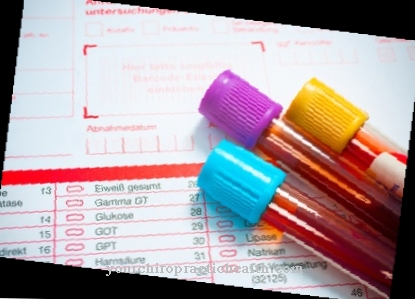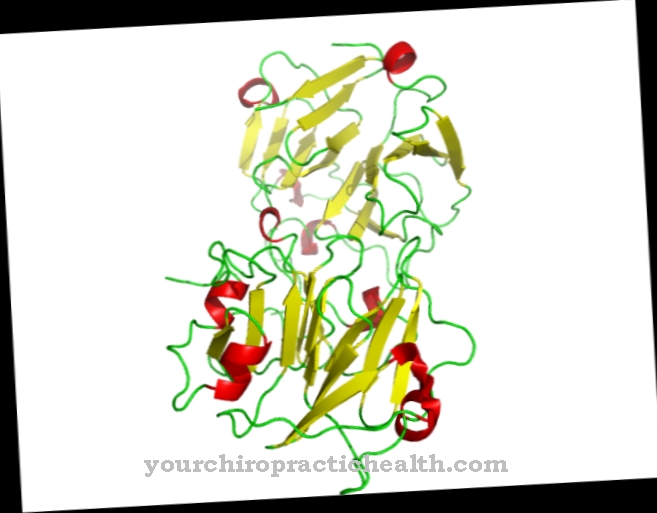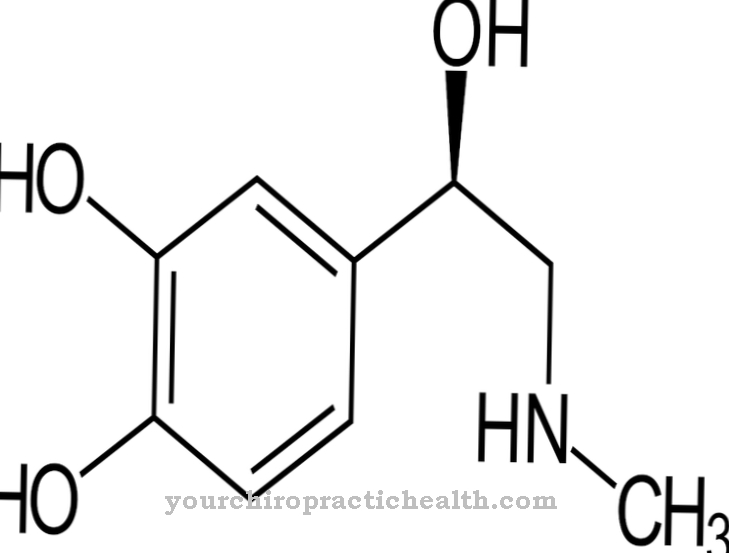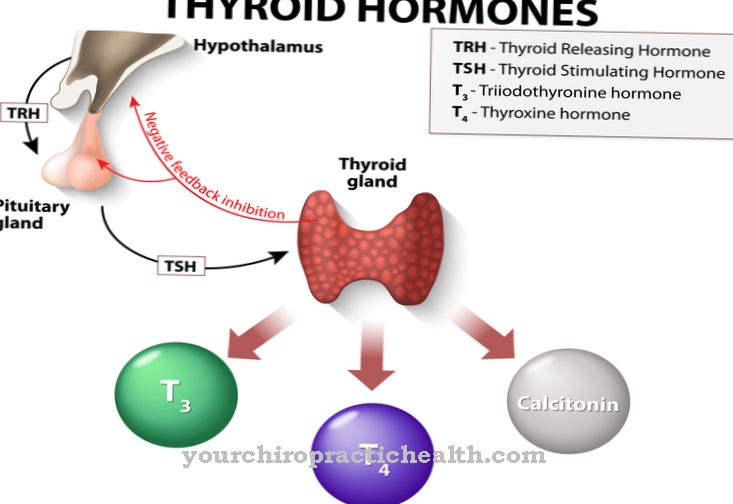Under the Thrombopoietin, also Thrombopoietin, medicine understands a peptide that is active as a hormone and belongs to the cytokines. The glycoprotein is primarily involved in the formation of platelets in the bone marrow. Increased or decreased concentrations of the hormone in the serum indicate blood formation disorders of various causes.
What is thrombopoietin?
Thrombopoietin is a hormonal glycoprotein from the group of cytokines. The cytokines are regulatory peptides. This turns them into proteins that are involved in controlling the immune response. Thrombopoietin is produced in the liver, in the stromal cells of the bone marrow, in the striated muscles and in the kidney. In the human bone marrow, thrombopoietin stimulates what are known as megakaryocytes. These giant cells or blood stem cells are responsible for the formation of new cells in the blood and the immune system.
Among other things, thrombocytes, i.e. blood platelets, are formed from the giant cells. The determination of the concentration of thrombopoietin in the blood can serve various diagnostic purposes, because this value says something about the number of thrombocytes and megakaryocytes in the organism. Both unexpectedly high and unexpectedly low levels of thrombopoietin are pathological and can, for example, indicate inflammation and infections.
Anatomy & structure
Thrombopoietin is around 78 kDa in size and is a glycoprotein. Between 332 and 335 amino acids form a thrombopoietin. The N-terminal domain of the peptide resembles erythropoietin, which as a hormone takes on similar regulatory functions in the formation of erythrocytes. From a genetic point of view, the thrombopoietin gene is located on the longer arm of chromosome three at position q26.3–27. Its hormonal control circuit distinguishes thrombopoietin from other hormones in that the number of all available receptors is included in the control.
Thrombopoietin promotes the formation of platelets, which in turn bind to the hormone in the blood via a thrombopoietin receptor on their surface. The concentration of thrombopoietin in the blood decreases with the number of platelets formed and the formation of new platelets is regulated down in this way.
Function & tasks
The hormone thrombopoietin plays an important role in thrombopoiesis in particular. Thrombopoiesis takes place in the bone marrow and is the formation of blood platelets, which is included in blood formation. Blood coagulation is dependent on thrombopoiesis, so that thrombopoietin in the broadest sense only enables blood to clot and thus protects the body from major blood loss and infections in the event of injury.
In thrombopoiesis in the bone marrow, the platelets arise from mesenchymal cells, which in principle can become all blood cells and therefore belong to the stem cells. By developing into lymphatic and myeloid stem cells, the stem cell irreversibly decides to produce a specific cell series. Myeloid stem cells develop into megakaryoblasts in the first step. Then they become megakaryocytes and, in the final step, develop into platelets. Each platelet lives between five and twelve days and is eventually broken down in the spleen, lungs or liver.
Thrombopoiesis must therefore take place permanently in the bone marrow. The production of new platelets is stimulated by thrombopoietin, which is synthesized in organs such as the kidney and liver. The circulating platelets take up the hormone with their receptors and break it down. The megakaryocytes do the same when they come into contact with the peptide. The concentration of thrombopoietin in the blood is inversely proportional to the amount of megakaryocytes and platelets circulating in the blood. The lower the thrombopoietin concentration, the higher the number of circulating platelets.
You can find your medication here
➔ Medicines for wound treatment and injuriesDiseases
The number of blood platelets can be estimated using thrombopoietin values. Many disorders of thrombocytopoiesis can in turn be detected via the number of platelets. Such disorders can, for example, result in thrombocytopenia. This is a lack of platelets.The doctor only speaks of thrombocytopenia if there are fewer than 150,000 platelets per µl of blood.
The causes of such underproduction can be different. Acquired damage to the bone marrow should be taken into account, for example. This includes, for example, damage caused by poisoning. Physical damage such as that caused by chemotherapy is sometimes the cause. The same is true for tumors. Folic acid and vitamin B12 deficiency symptoms can also be causative. On the other hand, an underproduction of thrombopoietin can also be responsible for the low platelet level, which can be traced back to damage to the liver.
Congenital causes such as blood formation disorders in the context of a genetic syndrome can just as easily cause underproduction. Therapeutic treatments such as dialysis can also reduce the number of platelets in the blood. The same applies to medical devices such as heart valves, as they could mechanically damage the platelets. Thrombocytosis is when there is an excessive production of blood platelets. In this case there are over 500,000 platelets in one µl.
Such overproduction occurs after major blood losses and operations. Tumors can also be the cause. If there is a persistently high concentration of platelets, it is called essential thrombocythemia. This phenomenon is a malignant increase in platelets, which goes back to a genetic cause and is to be counted among the neoplasms.













.jpg)

.jpg)
.jpg)











.jpg)